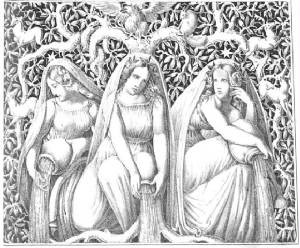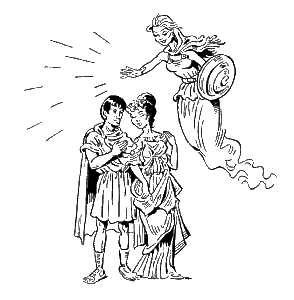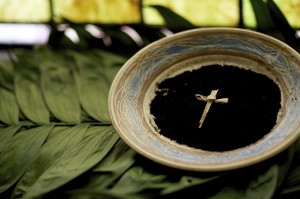International Earth Day – Mother Earth Day
 Every 22nd of April, humanity celebrates International Mother Earth Day & Earth Day
Every 22nd of April, humanity celebrates International Mother Earth Day & Earth Day
By Risa D.
As more than a billion people participate in Earth Day activities every year, Earth Day has become the world’s largest civic observance. The massive concern to build right relations between humanity and the living being we call Earth is evidence of humanity’s love of the Mother. In 2009 the United Nations General Assembly proclaimed April 22 International Mother Earth Day, with a significant resolution affirming “the interdependence existing among human beings, other living species (the kingdoms – mineral, plant, animal & human) and the planet itself, the Earth which we all inhabit.” The Earth is our home.
Celebrating Earth Day helps us define new emerging processes (economic, social, political) focused on the well-being of the kingdoms. Through these humanity seeks to raise the quality of life, foster equality and begin to establish Right Relations with the Earth. We dedicate ourselves to bringing forth balance and a relationship of Harmony with all of nature. Learn about planting a billion trees (the Canopy Project); participate in 1.5 billion acts of Green. Disassociation (towards Earth) is no longer viable. We lose our connection to life itself. Participation is viable – an anchor, refuge and ordained service for all of life on Earth. www.earthday.org/; www.harmonywithnatureun.org;
www.un.org/en/events/motherearthday/
From Farmers Almanac, “ On Earth Day, enjoy the tonic of fresh air, contact with the soil, companionship with nature! Go barefooted. Walk through woods find wildflowers and green moss. Remain outside, no matter the weather!” Nature, Earth’s most balanced kingdom, heals us. The New Group of World Servers is preparing for May 3rd, Wesak Buddha Taurus solar Festival. We prepare through asking for and offering forgiveness. Forgiveness purifies and like nature, heals. (284)
Esoteric Astrology as news for week April 22 – 29, 2015
ARIES: Money concerns are shared by you and Taurus this month. Pull back on spending for a while assessing exactly what you need and no more. Before any actions with money, tithe to those in need. Do not refrain from this, even if you feel you have no money. We can always give even small amounts. This ensures constant loving resources flowing into our lives from spiritual sources. After giving, financially organize.
TAURUS: Read Aries, following the suggestions. And now about your money and resources. You have resources all around – hidden away in containers (boxes, bags, drawers, garages, storage units, etc.) – kept as historical remembrances. However, now a new resource is needed. Trade the old for the new so new money can come in. Ask if you need assistance in organizing. Know when things are used their light shines forth.
GEMINI: Allow yourself contemplation and solitude. Your own thoughts need to be listened to now. You may feel dreamy during the day and/or dreams become vivid through the night. Record all dreams your Dream Journal, then talk about them. Dreams are messages clarifying yesterdays, releasing emotions, future prescriptions. Over time, chronicling our dreams, they become understandable.
CANCER: More and more you must come out of your shell. You’re a cardinal (initiating things) sign (a leader) that knows the future must be prepared for in ways different than before. You’re the nurturing “great mother”, realizing food must be grown and necessities must be sustained for family, friends, pets and humanity later on. Tend to all personal health matters first. Then, “carry on.”
LEO: As you observe those you work with, looking for constancy, trust, confidentiality and abilities, you’re also being observed. You’re influencing many at this time. Let your work ethic be a model for others. It’s important to acknowledge, praise and recognize everyone. We, you included, evolve through praise, recognition and what we create. We see, recognize and applaud your gifts and endeavors.
VIRGO: Tend to resources and money with care. If you do so, ponder upon and prepare to travel to places that transform your mind and heart, cast a radiance of dappled light onto your body, and allow you to adapt to new ways of life, food, people and cultures. It also could be time to return to school or a certain study. Some great learning calls to you – heart to heart.
LIBRA: Thinking, planning and organizing finances for the future is appropriate now. A good idea is purchasing gold and silver instead of retirement plans and/or other ideas the banks have created. Find someone reputable who ethically deals in gold and silver.Discuss with others (family, intimate, financial advisor, etc.) what and how you are planning for your death. Make a plan. Legalize it.
SCORPIO: With all your present relationships, partnerships and interactions with others, you consider new ways of relating that include more Goodwill and Kindness that create Right Relations. Having the intention to act with greater depth and love is alchemical, creating a magnetic aura around. It attracts others seeking the love you so potently (or potentially) emit. Think on these things. Do you need new sunglasses?
SAGITTARIUS: Lot of little things need your attention. So often you see the big issue, the grand scale, the great philosophical over-view. It’s an excellent celestial foundation of knowing. However, little parts and pieces in your world need to be tended too. Survey your daily agenda, tasks and environments for what calls calling for care and attention. Then heavens and earth meet, heart and mind, body and Soul integrate and balance.
CAPRICORN: Something new is asking to come forth. A new path perhaps, new garden, new foundation of life. May a new child or a new creative endeavor at home, in rooms around the house. Something repaired, repainted, re-floored, re-surfaced, carpeted or perhaps a new art form of creativity. Everything must be fun, lively, filled with color, music, dance, fire, friends, nurturing foods and children at play. A new comfort.
AQUARIUS: Careful with communication. You could be too quick for others to follow and/or understanding. You could also be potentially frustrated with others, thinking them too slow. Act instead with kindness & understanding. No one in the zodiac is as fast as you, talks quicker, or understands new realities with your comprehension. Look with love and compassion upon your fellow travelers. They all wish they had your mind.
PISCES: The environments around you are in need of change. You need a change of environment, neighborhood, yard, and room. Some Pisceans might actually need a completely new home. If this is you, begin with a list of all you need in a home, town, village, etc. Then draw & write down what your perfect home would be. Working on this daily, hourly creates a magnet field within you that attracts your new home directly to you. And the resources needed. Begin now. There is happiness in change.
~Risa – writer, teacher, founder & director…
Esoteric & Astrological Studies & Research Institute
~Email: risagoodwill@gmail.com
~Web journal: www.nightlightnews.com
~Facebook: Risa’s Esoteric Astrology for daily messages








